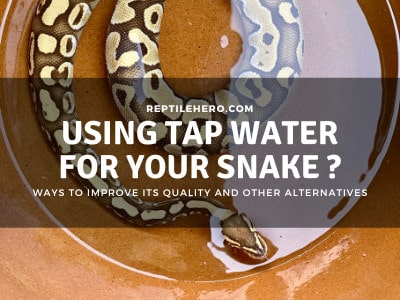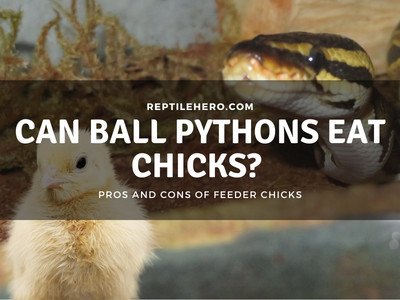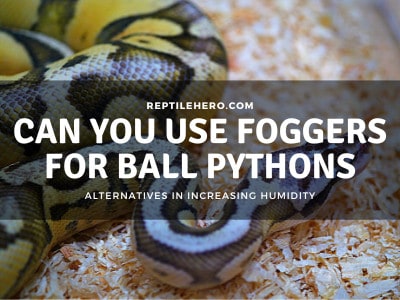Why Won’t Your Ball Python Shed? (4 Reasons and Solutions!)
Have you noticed that your ball python won’t shed? What is even the purpose of shedding in snakes? Shedding seems to be a minor process in ball pythons, but can it be dangerous?
Ball pythons may not shed regularly due to low humidity, infrequent feeding, and old age. In rare cases, a ball python may not shed within 5–6 months due to diseases and internal parasites.
Ball pythons shed their skins due to growth. Should you do anything if your snake won’t shed? What are the signs, causes, and prevention of bad sheds? Be informed about these essential questions as you read until the end!
1. Low Humidity
Low humidity is one of the primary factors why a ball python won’t shed. This can also cause shedding problems like stuck shed and retained eyecaps.
Humidity greatly helps ball pythons to shed off their old skin. Snakes need moisture to create the fluid that will help separate their old and new layers of skin.
Now, imagine if a ball python is in a dry environment. It is almost guaranteed that such a python will have shedding issues.
So if you’re keeping your ball python at humidity levels below 50% for long periods, it might have a bad shed or not shed at all.
In addition to shedding problems, low humidity also comes with the risk of your ball python getting respiratory infections.
2. Infrequent Feeding
Ball pythons that are fed less tend to grow slower, and thus don’t shed regularly. Underweight ball pythons will shed less frequently due to their slow growth rate.
Overfed ball pythons tend to shed more due to a fast growth rate but still decrease in frequency as they get older. While underweight ones will have fewer sheds due to a slow growth rate.
Some breeders share that their power-fed juveniles shed every month while those fed at a normal phase shed every 1½ or 2 months. They also observed that those that shed more are bigger than those that shed less.
>>Learn more about the proper feeding schedule of a ball python in our article about overfeeding ball pythons
3. Old Age
Older ball pythons tend to not shed regularly due to a naturally slower growth rate. On average, a young ball python can shed at least once a month while older pythons only shed once every 2–4 months.
If your ball python is 1–3 years old, their shedding frequency will start to decrease in comparison to when they were younger. This is due to younger ball pythons having more room to grow, unlike older ones.
As they grow, a ball python’s metabolism also decreases which leads to a slower growth rate. For example, some ball pythons will double in size in their first year but will only grow about 10–20% more in their 2nd year.
4. Illness
Illnesses, parasitic infestations, and other health complications can cause a ball python to not shed. Dermal disease or not, these issues can directly or indirectly affect a snake’s shedding health.
Most diseases and parasitic infestations cause stress and loss of appetite for a ball python. This will lead to malnourishment which also hinders the snake’s shedding process.
Pro Tip: If you want to test whether or not your ball python has a disease or parasites, you can just take a fecal sample from it and bring it to a veterinarian for testing. But if its health is deteriorating quickly, then bringing it with you to the vet might be the best action.
A ball python can also have skin infections or dermatitis which is mainly caused by lack of humidity. So if a ball python doesn’t shed and looks wrinkly, it might be dehydrated.
What Should You Do if Your Ball Python Won’t Shed?
If a ball python won’t shed, there is nothing its owner can do to force the process. However, re-evaluation of factors like humidity, feeding, and overall health can help the snake shed.
Fun Fact: The process of shedding in reptiles is called “ecdysis.”
If your ball python does not shed frequently like before, do not worry as this is normal for most—especially older ones. Some ball pythons won’t even shed for 3–4 months at a time.
My 6-year-old male ball python, Choco, only sheds once every 3 months. He is healthy and is not overfed or underfed by any means. This shedding frequency is due to his minimal growth since he is at the standard maximum size of a male ball python.
Female ball pythons max out at around 5–6 ft while males tend to be smaller at around 4–5 ft.
But be worried if your ball python is young and has not shed in 2 or more months. Check its body condition. It might have health implications like parasites, illnesses, and stress.
The Ball Python’s Shedding Process
It should take around 10–14 days for a ball python to shed. Signs like a pink belly, cloudy eyes, and dull skin are seen in ball pythons that are about to shed. Ball pythons shed 3–12 times a year depending on their growth rate.
Ball pythons, like most snakes, produce a fluid in their epidermis that separates the old skin from the new one. This is also produced in their eyes to replace the old eyecap, that is why snakes that are about to shed have blue-gray eyes.
| Day in the Shedding Cycle | Typical Signs of Shedding |
| 1–2 | Slightly dull skin and pink belly |
| 3–7 | Increasingly dull skin and blue-gray eyes |
| 7–10 | Loss of dullness and opaque eyes |
| 10–14 | Actual shedding of the old skin |
Other than the physical signs mentioned above, the behavior of a ball python will change due to their low eyesight and uncomfortable state when shedding. They can exhibit frequent hiding, defensive behavior, and refusal of food.
Ball pythons that are about to shed usually hang around near or soak inside the water bowl.
Warning: If a ball python takes too long to shed (5–6 months), then it should be brought to a veterinarian for examination of diseases and infestations. However, these issues typically come with other signs like refusal of food, lethargy, and other symptoms.
4 Signs of Abnormal Shedding in Ball Pythons
The 4 signs of abnormal shedding in ball pythons are: 1) stuck shed, 2) retained eyecaps, 3) flaky shed, and 4) removed scales.
1. Stuck Shed
The most common sign of an abnormal ball python shed is stuck shed. These are patches of shed skin still intact on the ball python’s body which is caused by low humidity. It could also be a possible sign of dehydration of the snake.
Stuck shed does not cause immediate problems to a ball python and can be removed easily by bumping up the humidity inside its enclosure.
However, if a stuck shed has not been removed and accumulates after multiple shed cycles, it can cause implications to cause discomfort and even fatality.
So if your ball python currently has a stuck shed, make sure that it is removed within 2 weeks to prevent infections and even amputations. Do not worry as it will naturally be removed within 2–3 days of 80% humidity inside the enclosure or on a hide.
If you cannot maintain high humidity for a few days, I suggest providing a humid hide on the hot side or in the middle of the enclosure. Besides that, constantly having clean water in a large but shallow water bowl is advisable to allow the ball python to soak if it wants to.
Tail amputation in ball pythons can also be caused by severe stuck shed that restricts blood flow in the area. Most reports state that the stuck tail shed had been there for 2 shed cycles which means a span of 4–6 months has passed.
2. Retained Eyecaps
Retained eyecaps in ball pythons are an immediate sign of abnormal shed. This is commonly caused by low humidity and possible mite infestation.

Unlike a simple stuck shed, if the ball python has retained eyecaps it should be removed immediately to prevent infection in its eyes [2]. This infection is called subspectacle abscessation.
Retained eyecaps can cause poor eyesight, or worse, permanent blindness.
Those who have experienced this claimed that after a month of the ball python having a stuck eyecap, infections started to show.
But this won’t happen if the eyecap is removed immediately! You can use a q-tip to remove retained eyecaps, but be careful to avoid poking the actual eyes of the ball python.
3. Flaky Shed
In ball pythons, a flaky shed refers to a molt that is separated into multiple small pieces. A flaky shed also indicates that the snake needs more humidity and moisture in its enclosure to have a better shed.
To clarify, there can be scenarios where there are no stuck sheds on the snake but its main shed are flaky and dry.
When this happens, a re-evaluation of humidity is recommended to improve the next shed of the ball python.
A healthy ball python shed is sloughed off in one whole piece or a few large pieces which got torn through direct contact with an object. Normal python shed must also feel soft and stretchy rather than dry and brittle.
4. Removed Scales
Ball pythons with patches of scales remove after shedding indicate a bad shed. This is a sign of a dry shed caused by low humidity.
You can determine a removed scale by its difference in color from the area around it. It will typically look like weird white or grey spots in the ball python. These also won’t shine like typical snake scales.
Do not worry too much if there are any bald spots in your ball python as it will regenerate after 3–4 sheds. Although this is a rare occurrence, make sure to observe any signs of inflammations and infections on the removed scales.
For any infections in the ball python, it is advised to immediately bring it to a veterinarian for antibiotic injections and other treatments.
What to Do if Your Ball Python Has a Stuck Shed?
Owners can help ball pythons remove stuck shed by simply increasing humidity in their enclosure, providing a large water dish, and placing a humid hide. Soaking should only be done as the last resort because it can cause unnecessary stress to the snake.
If your ball python currently has a stuck shed, it is recommended to provide it with a humid hide and a good size water dish to soak on. The shed will then be naturally removed without even soaking the snake.
Contrary to common belief, I do not recommend soaking ball pythons because of a stuck shed. This procedure can be extremely stressful for the snake.
But there are some cases that will require immediate soaking.
You can soak your ball python if it has stuck shed in these places:
- Eyecaps
- Jaw
- Tail
After soaking the ball python, it is recommended to gently wipe off the shed in its body, tail, and head. In cases of retained eyecaps, you can remove them by using clean q-tips that are moistened by water.
Warning: Do not manually remove the stuck shed if it is very dry. Dry stuck shed can peel off the fresh scale of the ball python which can be painful and lead to infections and scale rot.
How to Prevent a Bad Shed in Ball Pythons (2 Ways!)
To avoid shedding problems, it is important to provide the ball python: 1) high humidity and 2) rough surface.
Read until the end to find out exactly how these can help your ball python get successful shed each time!
1. High Humidity
Improving the humidity in the enclosure is the main factor to improve a ball python’s shed. Regular ambient humidity must be around 60–70%, but it should be bumped up to 80% during the shed cycle.
To provide good humidity for a shedding ball python, you can make a humid hide using a plastic container filled with wet moss or paper towels in it. The entrance to this hide should only be big enough for your snake to safely enter it.
You can also change the substrate by using other options that retain humidity better. Some good alternatives are coco peat and cypress mulch.
In contrast, aspen shavings will sap out the humidity of the enclosure so it is not recommended if you are having humidity problems.
You can also decrease the ventilation of the enclosure to retain humidity inside. Just be careful not to completely cut it off to avoid suffocating your snake!
>>Learn more about humidity maintenance in our article about using foggers for ball pythons
2. Rough Surface
Ball pythons can benefit from having a rough surface that they can use to easily remove their shed. Decors with rough surfaces like rocks, branches, and cork barks. can be utilized by a ball python while it’s shedding.
Ball pythons have smooth scales which only cause a little friction [3]. So they will be having a harder time removing their old skin if they rub it against another smooth surface.

In addition to this, rough surfaces are important for shedding because, in the wild, fresh sheds are commonly located between rocks and branches. This indicates that they can effectively use these materials to help them shed their old skin.
Pro Tip: Rocks, branches, and other materials with rough surfaces should be sanitized first before putting them inside a ball python enclosure. They can be cleaned through boiling or baking. Then let them cool down and dry before adding them into the enclosure.
Further Questions
How long can a ball python go without shedding?
Ball pythons typically replace their old skin 3–12 times a year, meaning they can go for about 3–4 months without shedding.
Why is shedding important in ball pythons?
Shedding is important to ball pythons because it to allows for more room for growth and removes external parasites. This can be compared to how a human will buy new clothes because they have outgrown their old ones and to protect themselves from the elements.
Is shedding always accompanied by fecal matter in ball pythons?
Ball pythons don’t always release fecal matter during shedding. However, this is a common behavior observed by many ball python keepers.
Summary of Why Your Ball Python Won’t Shed
Ball pythons won’t shed their skin because of low humidity, infrequent feeding, old age, and different illnesses like dermatitis. If a ball python does not shed, there is nothing the owner can do to force this process to occur.
Ball pythons shed around 3–12 times a year and they undergo the entire shedding cycle within 10–14 days. A ball python that has a bad shed typically exhibits stuck shed, retained eyecaps, flaky shed, and removed scales.
If a ball python had a stuck shed it is best to let them be while maintaining high humidity in its enclosure. If a ball python has stuck shed in their eyecap, jaw, and tail, soaking can be done. To prevent bad sheds maintaining high humidity and providing a rough surface is advised.
Sources
[1] https://wpvet.com/wp-content/uploads/2021/03/reptile-information-sheet.pdf
[2] https://www.msdvetmanual.com/exotic-and-laboratory-animals/reptiles/bacterial-diseases-of-reptiles






